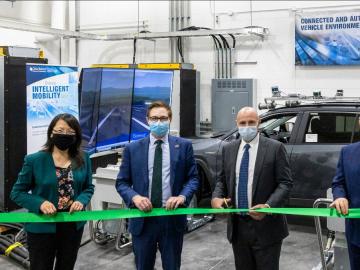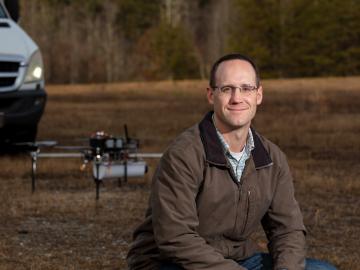
Filter News
Area of Research
- Advanced Manufacturing (4)
- Biology and Environment (27)
- Computational Biology (1)
- Computational Engineering (2)
- Computer Science (1)
- Energy Science (40)
- Fusion and Fission (2)
- Fusion Energy (1)
- Isotope Development and Production (1)
- Isotopes (19)
- Materials (34)
- Materials for Computing (4)
- Mathematics (1)
- National Security (15)
- Neutron Science (9)
- Nuclear Science and Technology (3)
- Quantum information Science (2)
- Supercomputing (31)
News Type
News Topics
- (-) Biomedical (41)
- (-) Clean Water (23)
- (-) Composites (26)
- (-) Critical Materials (25)
- (-) Cybersecurity (26)
- (-) Frontier (20)
- (-) Irradiation (2)
- (-) Isotopes (38)
- 3-D Printing/Advanced Manufacturing (95)
- Advanced Reactors (27)
- Artificial Intelligence (60)
- Big Data (37)
- Bioenergy (65)
- Biology (74)
- Biotechnology (21)
- Buildings (46)
- Chemical Sciences (57)
- Computer Science (119)
- Coronavirus (34)
- Education (3)
- Element Discovery (1)
- Emergency (1)
- Energy Storage (88)
- Environment (126)
- Exascale Computing (17)
- Fossil Energy (2)
- Fusion (35)
- Grid (45)
- High-Performance Computing (55)
- Hydropower (8)
- ITER (6)
- Machine Learning (37)
- Materials (105)
- Materials Science (105)
- Mathematics (8)
- Mercury (9)
- Microelectronics (1)
- Microscopy (39)
- Molten Salt (8)
- Nanotechnology (47)
- National Security (38)
- Neutron Science (91)
- Nuclear Energy (63)
- Partnerships (35)
- Physics (46)
- Polymers (28)
- Quantum Computing (19)
- Quantum Science (48)
- Security (20)
- Simulation (27)
- Space Exploration (13)
- Statistics (2)
- Summit (32)
- Transportation (74)
Media Contacts

When Sandra Davern looks to the future, she sees individualized isotopes sent into the body with a specific target: cancer cells.

To better understand how the novel coronavirus behaves and how it can be stopped, scientists have completed a three-dimensional map that reveals the location of every atom in an enzyme molecule critical to SARS-CoV-2 reproduction.

Momentum Technologies Inc., a Dallas, Texas-based materials science company that is focused on extracting critical metals from electronic waste, has licensed an Oak Ridge National Laboratory process for recovering cobalt and other metals from spent

Scientists at Oak Ridge National Laboratory and the University of Tennessee designed and demonstrated a method to make carbon-based materials that can be used as electrodes compatible with a specific semiconductor circuitry.

Four research teams from the Department of Energy’s Oak Ridge National Laboratory and their technologies have received 2020 R&D 100 Awards.

ORNL and Department of Energy officials dedicated the launch of two clean energy research initiatives that focus on the recycling and recovery of advanced manufacturing materials and on connected and

Horizon31, LLC has exclusively licensed a novel communication system that allows users to reliably operate unmanned vehicles such as drones from anywhere in the world using only an internet connection.

Real-time measurements captured by researchers at ORNL provide missing insight into chemical separations to recover cobalt, a critical raw material used to make batteries and magnets for modern technologies.

After its long journey to Mars beginning this summer, NASA’s Perseverance rover will be powered across the planet’s surface in part by plutonium produced at the Department of Energy’s Oak Ridge National Laboratory.

A team led by Dan Jacobson of Oak Ridge National Laboratory used the Summit supercomputer at ORNL to analyze genes from cells in the lung fluid of nine COVID-19 patients compared with 40 control patients.


